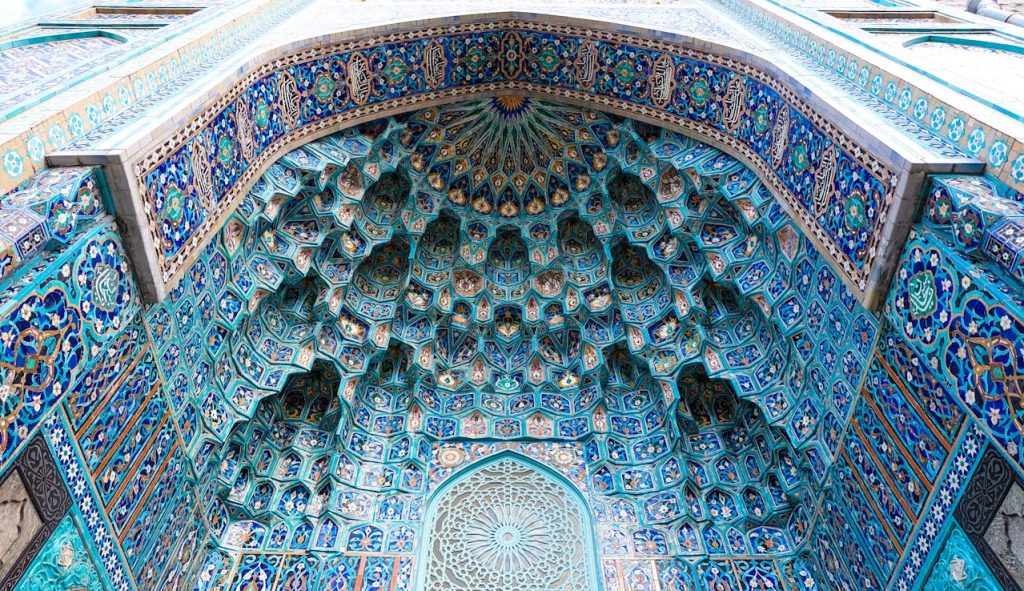Table of Contents
What is an Arabesque in Art?
An arabesque, in the realm of art, refers to a decorative style characterized by intricate, flowing patterns often involving interlaced lines, geometric shapes, and stylized foliage. Originating primarily in Islamic art, the arabesque has transcended its cultural roots, influencing various artistic traditions across the world. This essay delves into the historical origins, defining characteristics, cultural significance, and evolution of the arabesque in artistic expression.

Phoro by Pixabay
Historical Origins
The term “arabesque” derives from the Italian word arabesco, meaning “in the Arabic style,” which underscores its association with the Islamic artistic tradition. The arabesque emerged during the Islamic Golden Age (8th–13th centuries) as a distinctive style of ornamentation in architecture, manuscripts, textiles, ceramics, and metalwork.
Islamic art, heavily influenced by religious principles, avoided the representation of human or animal forms in sacred contexts, adhering instead to aniconism. This doctrinal backdrop encouraged the development of abstract and non-figurative decorative forms, leading to the proliferation of arabesques. The use of arabesque patterns was not merely decorative but imbued with spiritual significance, symbolizing the infinite nature of creation and the unity of God.
Defining Characteristics
Arabesques are defined by their complex, repetitive, and symmetrical designs. They typically feature:
- Floral and Foliage Motifs: Stylized leaves, vines, flowers, and tendrils are interwoven to create fluid and harmonious patterns. These elements are often abstract rather than representational, lending a universal and timeless quality to the design.
- Geometric Precision: Arabesques frequently incorporate geometric shapes and mathematical principles, ensuring balance and symmetry. This reflects a sophisticated understanding of geometry, a discipline highly valued in Islamic culture.
- Infinite Repetition: Many arabesque designs employ patterns that suggest endless repetition, evoking the concept of eternity and the infinite nature of the divine.
- Tessellation and Interlacement: Arabesques often use tessellation—covering a surface with repeating patterns without gaps or overlaps—alongside interwoven lines, creating visually intricate compositions.
Cultural Significance
The arabesque is more than an artistic motif; it is a profound cultural expression. In Islamic art, it serves both a decorative and spiritual purpose, aligning with the Quranic emphasis on the transcendence of God. By avoiding anthropomorphic representation, arabesques celebrate the abstract beauty of divine creation and reflect the unity underlying the diversity of the natural world.
Moreover, arabesques have a meditative quality. Their repetitive and harmonious patterns invite contemplation, aligning with Sufi mysticism and the broader Islamic philosophical tradition, which often emphasizes introspection and the pursuit of spiritual understanding.
Evolution and Global Influence
While rooted in Islamic culture, the arabesque style has influenced and been adopted by other artistic traditions. During the Renaissance, European artists encountered arabesques through contact with the Islamic world, particularly via Moorish Spain, the Crusades, and trade. Renaissance artists adapted these motifs into grotesque designs, blending classical elements with the flowing patterns of the arabesque.
In the 19th century, the Orientalist movement in Europe revived interest in Islamic art and architecture, including arabesques. Western artists and designers incorporated arabesque motifs into furniture, textiles, and interiors, often romanticizing their exotic origins.
Arabesques also found expression in other mediums, including ballet, where the term describes a graceful posture inspired by the flowing, ornamental quality of the visual art form.
Contemporary Perspectives
In modern times, the arabesque continues to inspire artists, architects, and designers worldwide. Contemporary interpretations often blend traditional motifs with innovative techniques, reflecting a dialogue between past and present. Digital art, for instance, has expanded the possibilities for creating intricate arabesque patterns with unprecedented precision and complexity.
Moreover, the arabesque remains a symbol of cultural identity and heritage for many communities. It stands as a testament to the rich artistic traditions of the Islamic world and their enduring relevance in a globalized cultural landscape.
Conclusion
The arabesque, with its intricate designs and profound symbolism, is a testament to humanity’s ability to transform abstract principles into tangible beauty. Its origins in Islamic art highlight a deep philosophical engagement with geometry, nature, and spirituality, while its global influence underscores the universality of its aesthetic appeal. As a decorative style and a cultural emblem, the arabesque continues to enchant, inspire, and connect diverse artistic traditions across time and space.


No responses yet